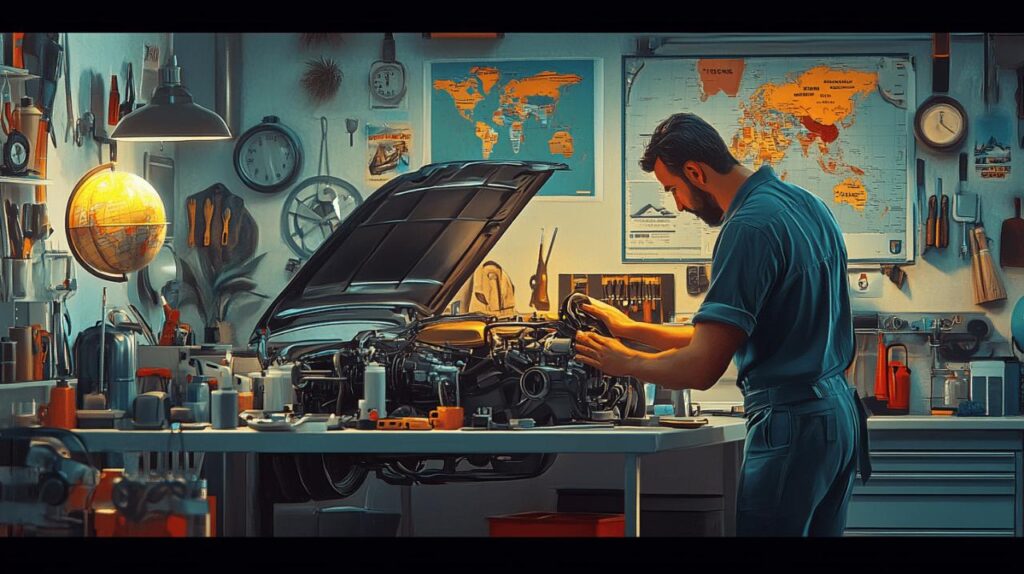Essential car maintenance practices
Welcome to our comprehensive guide on vehicle maintenance and alternative mobility solutions. Taking proper care of your car is essential for its longevity and reliability. The MetAuto blog consistently emphasises the importance of regular maintenance to prevent costly repairs and ensure your safety on the road. Understanding your vehicle's needs through the owner's manual provides valuable insights into maintenance schedules and dashboard symbols that indicate potential issues requiring attention.
Regular service schedules worth following
Adhering to a consistent maintenance schedule is crucial for keeping your vehicle in optimal condition. This typically includes regular oil and filter changes, which are the lifeblood of your engine's health. Most manufacturers recommend oil changes every 5,000 to 10,000 miles, depending on your vehicle model and driving conditions. Tyre rotation and balancing should be performed approximately every 6,000 to 8,000 miles to ensure even wear and extend tyre life, which is particularly important for SUV owners comparing quality options like Bridgestone and Michelin tyres.
Seasonal maintenance deserves special attention as it prepares your vehicle for changing weather conditions. Winter preparations might include checking antifreeze levels, battery performance, and installing winter tyres, while spring maintenance often focuses on air conditioning systems and underbody cleaning to remove winter salt deposits. For older vehicles, additional considerations become necessary, such as timing belt replacement—a critical component whose failure can cause catastrophic engine damage. Recent articles on the technological evolution of timing belts and special offers on Peugeot 207 timing belts highlight the ongoing importance of this maintenance item.
Diy checks every car owner should master
While professional servicing is essential, there are numerous inspections vehicle owners can perform themselves. Learning to check your oil level, tyre pressure, and brake fluid can help identify potential issues before they become serious problems. Understanding how to interpret warning lights, such as the oil warning light or the mysterious orange triangle in the Fiat 500 dashboard, empowers owners to take prompt action when needed. Simple maintenance tasks like cleaning car headliners or installing sunshades to protect interiors from heat damage can significantly extend the life of your vehicle's interior components.
Avoiding common mistakes during basic maintenance can save both time and money. For instance, the MetAuto blog specifically mentions five critical mistakes to avoid when changing a car wheel—a seemingly simple task that, when done incorrectly, can lead to safety issues. Similarly, understanding the appropriate tyre pressure for your vehicle type, whether it's a family car or a motorbike, ensures optimal handling, fuel efficiency, and tyre longevity. These small but significant maintenance aspects contribute substantially to your vehicle's overall performance and safety profile.
Modern mobility alternatives
 While maintaining your vehicle is important, exploring alternative transportation methods can reduce your carbon footprint, save money, and often provide more efficient urban travel options. The growing infrastructure for non-automotive transportation is making these alternatives increasingly viable for daily commuters and occasional travellers alike. As vehicle emissions regulations tighten, with mandatory anti-pollution checks becoming more common, many people are reconsidering their transportation choices.
While maintaining your vehicle is important, exploring alternative transportation methods can reduce your carbon footprint, save money, and often provide more efficient urban travel options. The growing infrastructure for non-automotive transportation is making these alternatives increasingly viable for daily commuters and occasional travellers alike. As vehicle emissions regulations tighten, with mandatory anti-pollution checks becoming more common, many people are reconsidering their transportation choices.
Public transport integration for daily commuters
Public transportation systems in many cities have evolved to offer comprehensive networks that can efficiently replace car commutes. Integration between different modes of public transport—buses, trains, trams, and subways—creates seamless travel experiences that often save time compared to driving through congested urban areas. Mobile applications now provide real-time updates on schedules, delays, and platform changes, making public transport more user-friendly than ever before.
Electric vehicles represent another significant shift in mobility solutions, with affordable options becoming increasingly available. The Dacia Spring electric car, available for under 2,000 euros according to recent deals, demonstrates how electric mobility is becoming accessible to broader segments of the population. For fleet managers, platforms like Simply Fleet offer solutions to automate maintenance operations, particularly valuable as fleets transition to include electric vehicles with different maintenance requirements than traditional combustion engines.
Cycling and walking infrastructure benefits
The expansion of cycling infrastructure in urban areas has transformed bicycles from recreational vehicles to practical daily transportation options. Dedicated cycle lanes, secure bike parking facilities, and bike-sharing schemes make cycling a viable alternative for commuters seeking health benefits alongside transportation. Many employers now provide facilities such as showers and changing rooms to accommodate cycling commuters, further encouraging this environmentally friendly option.
Walking remains the most accessible form of transportation, requiring no special equipment or costs. Urban planning increasingly incorporates pedestrian-friendly designs with wider pavements, pedestrian crossings, and car-free zones that prioritize safety for those on foot. The health benefits of incorporating walking into daily routines are substantial, potentially reducing healthcare costs while eliminating transportation expenses. These active transportation methods align perfectly with growing environmental consciousness and personal wellness goals, making them increasingly popular choices for short to medium-distance travel needs.





